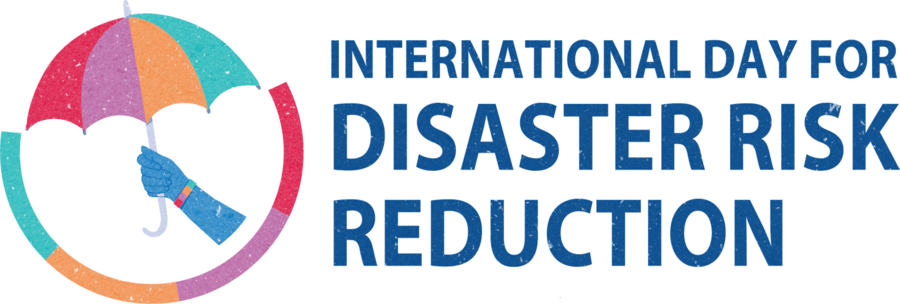International Day for Disaster Risk Reduction – Recent Research Highlights

October 13 is the International Day for Disaster Risk Reduction. PLOS ONE publishes research on all aspects of disaster risk reduction and across the spectrum of natural disasters, such as flooding, earthquakes, wildfires, landslides, heat waves and more. Today, we would like to highlight some recent studies published in PLOS ONE, and the authors behind this important work. We check in with Paula Andrea Valencia Londoño, who is the first author on a recent study of an informal settlement in northwestern Colombia, and Danielle Buttke, first author of a paper looking at how heat waves affect visitors to the Grand Canyon National Park.
Ecological urbanism as a condition underpinning urban life for internally displaced peoples in Colombia
Paula Andrea Valencia Londoño has a PhD in Social Sciences in the field of Culture of Peace from the University of Granada, Spain, Master in Development Studies from the University of the Andes, and is a Specialist in Peace and Conflict Management from the University of Granada. She was an Information Analyst at OCHA United Nations from 2008 to 2012, and is a full-time professor at the Faculty of Social and Human Sciences of the University of Medellin since 2012. She was coordinator of the Master in Conflict and Peace at the University of Medellin from 2012 to 2017, and currently she is Coordinator of the Specialization in Gender Studies and Leader of the Research Group on Conflict and Peace at the same university. Her most recent articles published in high impact journals are “Ecological urbanism as a condition underpinning urban life for internally displaced peoples in Colombia”, co-authored with Diana Valencia and Phoenix Paz and published in PLoS ONE 18(9), “Determinantes de género en la inseguridad objetiva y subjetiva: los casos de México y Colombia”, co-authored with Martha Natera and Marisela Pacheco, published in Política Criminal Vol. 18 Nº 35, “Habitabilidad de las mujeres desplazadas por la violencia en Colombia: caso de La Primavera”, co-authored with Diana Valencia and published in Cuadernos de Vivienda y Urbanismo, 16.
Valencia Londoño PA, Valencia Londoño D, Paz PS (2023) Ecological urbanism as a condition underpinning urban life for internally displaced peoples in Colombia. PLoS ONE 18(9): e0291794.
PLOS: Your paper studies a settlement in Colombia which sits in an area with multiple risks, both from the environmental impact on human settlement, and the impact of the human settlement on the environment. Can you please explain a bit of the background of this settlement, and more about the most pressing risks?
PAVL: La Primavera is an informal settlement located in the north of the Aburrá Valley, in the metropolitan area of Medellín, which is exposed to multiple risks. The first risk is derived from its proximity to the Aburrá River, also called the Medellín River. The settlement does not have the necessary margin of retreat from the Aburrá River, which is aggravated by the process of erosion that is occurring on the river bank, due to the overexploitation of its resources such as gravel and sand, the consequence so far is the loss of four houses. On the other hand, the houses in La Primavera were built on both sides of the old train track, a train that today is planned to be reactivated as a commuter train and that in its construction would imply the resettlement of the town. In addition to this, the side of the settlement opposite the one bordering the river has the highway that connects Medellín with the Atlantic coast as its boundary, and unfortunately the nearest school is located across the highway, which generates a permanent risk of accidents for children and mothers. Finally, a high-voltage power cable passes over the settlement and a gas pipeline crosses its subsoil. In summary, La Primavera is a paradigmatic case of competition for limited resources and the absence of the state that produces an overload in the ecosystems, generating multiple risks, derived from the conditions of vulnerability that characterize its inhabitants.
PLOS: Having conducted this study, what do you understand are the most pressing concerns for ensuring safety and sustainability for this community?
PAVL: The community of La Primavera has learned to live with risk; for this reason, the perception of risk among the population differed significantly from the risk estimated during the technical visit. Although the risk of flooding is known throughout the settlement, there are other environmental hazards that put the population at greater risk but are less perceived. For example, erosion of the river banks below the house foundations is a major problem. The same is true for landslides. Although the perception of risk is low, the actual level of risk, as calculated in the technical assessment, is high. However, their greatest concern has been, for more than three years, the imminent construction of the commuter train, a public work that would force them to abandon their settlement, a territory that some settlers have inhabited for more than 40 years, in addition to the little or no compensation that will be granted for their illegal settlement status. This is why the advocacy work of community leaders has focused on a resettlement proposal that allows them to survive as a community and have access to their right to adequate housing.
PLOS: What are your hopes for the future of cities in terms of ecological urbanism?
PAVL: Ecological urbanism invites us to understand cities as living organisms, with a metabolism that consumes resources and generates waste, and also as part of a larger system, an ecosystem that must survive in order for them to subsist. Their deterioration is the prelude to the environmental risks that increasingly threaten cities. The question is: How can cities be designed in balance with the natural environment in Latin America, where spontaneous growth, the product of migration and the search for opportunities, has been the determining factor in urban expansion? The great challenge for this part of the continent is to reconvert cities so that they are not only consumers but also generators of resources.
Predicting climate-change induced heat-related illness risk in Grand Canyon National Park visitors
Danielle Buttke, DVM, PhD, MPH, DACVPM, leads the One Health Program for the National Park Service, a joint position between the Office of Public Health and Wildlife Health Branch that recognizes the interconnectedness of human, animal, and environmental health. She serves as an agency lead for zoonotic disease response and leads outbreak response activities and research on ecological and climate drivers of zoonotic disease and climate impacts to health.
Dr. Buttke is also a AAAS Leshner Leadership Fellow for public engagement in science specializing in communication and behavior change. Prior to joining the National Park Service, she served as an epidemic intelligence service officer at the CDC’s National Center for Environmental Health. She holds bachelors in ecology and political science, a Doctorate of Veterinary Medicine and PhD in comparative biomedical sciences from Cornell University, and a Masters in Public Health from Johns Hopkins University.
Buttke DE, Raynor B, Schuurman GW (2023) Predicting climate-change induced heat-related illness risk in Grand Canyon National Park visitors. PLoS ONE 18(8): e0288812.
PLOS: Your study looks at the future of heat-related illness risk for visitors to the Grand Canyon National Park. Can you tell us about the motivations behind this study, and how you came to be involved in this project?
DB: This study highlights one of the many reasons climate change is considered one of the greatest public health threats of the century. Because heat illness is one of the most immediate and direct impacts of a warmer climate, we thought that improving understanding of exactly how this direct impact would influence human health in our parks would give us a window into what future risk looks like and start conversations, planning, and action to address the human health threats of climate change more broadly. Grand Canyon National Park has unique features that put visitors at higher risk of heat illness. Hiking down in elevation into the Grand Canyon means the temperature gets hotter as your hike progresses and exertion increases, making it harder for the body to cool itself and resulting in a greater burden of heat illness in hikers. This elevated risk means that Grand Canyon National Park has had excellent programs and data on heat illness risk and provided an excellent model for our study.
PLOS: There is an interesting conundrum between the benefits of visiting national parks and the risks posed by environmental or physical extremes in these situations. What did you learn about this balance during your study – is there a significant need for better education before or during visits to extreme environments?
DB: There are a variety of environmental and physical risks associated with outdoor recreation. However, there are also tremendous health benefits associated with spending time in nature and outdoors, so it is important we take steps to ensure we can recreate safely. The National Park Service has a range of strategies to raise awareness and educate visitors during heat events and offers alternative activities to help visitors ‘Beat the Heat‘. Grand Canyon routinely provides safety messages on environmental and individual factors that can increase the risk of heat illness as well as tips on planning for heat and how to ‘Hike Smart‘ to avoid heat illness. As climate change increases the number and severity of extreme heat events, it is increasingly important that the public is aware of the risk and takes steps to protect themselves. We found that heat illnesses were most common during the shoulder seasons, when visitors are least prepared for heat events. This highlights the importance of education and awareness in reducing heat illness.
PLOS: What does your research tell us about the future of the risks to human life during heatwaves?
DB: Heat illness is one of the many ways that climate change threatens human health, and like other climate-related risks, it will become more severe in the future. Our work also shows the potential that climate action holds to save lives and improve human well-being. Extreme heat waves can be incredibly disruptive to visitors vacationing in National Parks, but they can be more detrimental and devastating to outdoor workers, and to other vulnerable populations that lack the ability to avoid heat exposure or adapt to the extreme temperatures. This study improves our understanding of how climate change threatens the National Park Service’s ability to provide safe and enjoyable experiences for visitors. We hope that it brings attention to the very significant threat climate change poses to human health and how important climate action is to all humans but especially those at greatest risk and with the least resources to respond.
